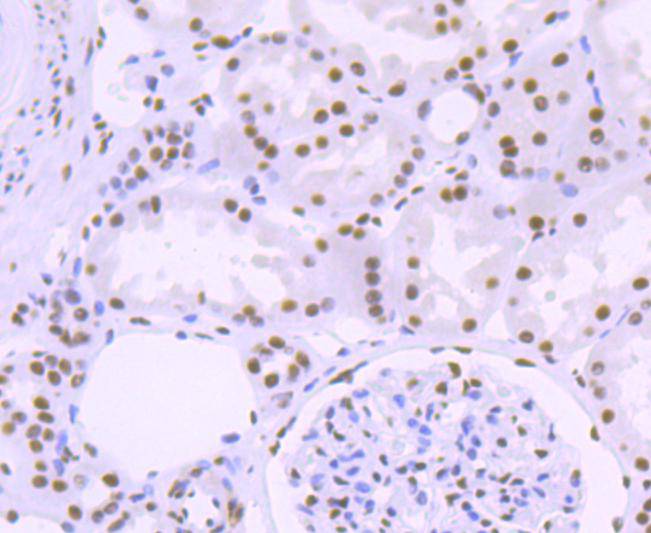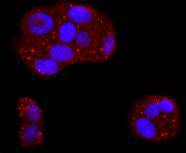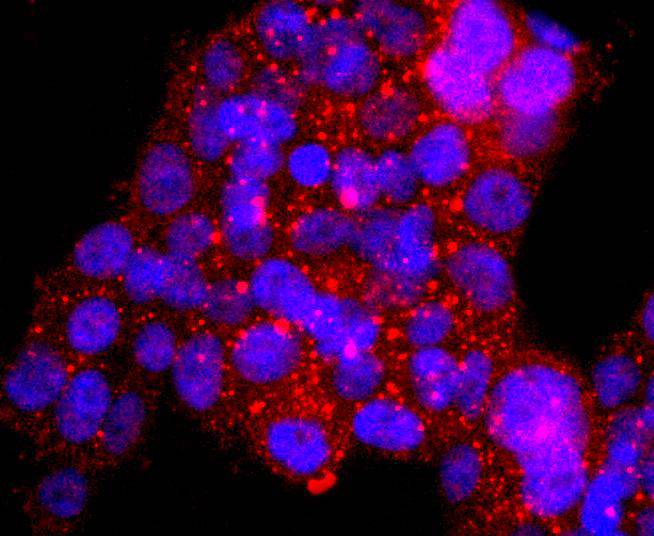Product Detail
Product NameASPP2 Rabbit mAb
Clone No.JF09-98
Host SpeciesRecombinant Rabbit
Clonality Monoclonal
PurificationProA affinity purified
ApplicationsWB, ICC/IF, IHC
Species ReactivityHu
Immunogen Descrecombinant protein
ConjugateUnconjugated
Other Names53BP2 antibody Apoptosis stimulating of p53 protein 2 antibody Apoptosis stimulating protein of p53 2 antibody Apoptosis-stimulating of p53 protein 2 antibody ASPP2 antibody ASPP2_HUMAN antibody BBP antibody Bcl2 binding protein antibody Bcl2-binding protein antibody NY REN 51 antigen antibody p53 binding protein 2 antibody p53-binding protein 2 antibody p53BP2 antibody PPP1R13A antibody Renal carcinoma antigen NY-REN-51 antibody Tp53bp2 antibody Tumor protein p53 binding protein 2 antibody Tumor suppressor p53 binding protein 2 antibody Tumor suppressor p53-binding protein 2 antibody
Accession NoSwiss-Prot#:Q13625
Uniprot
Q13625
Gene ID
7159;
Calculated MW150 kDa
Formulation1*TBS (pH7.4), 1%BSA, 40%Glycerol. Preservative: 0.05% Sodium Azide.
StorageStore at -20˚C
Application Details
WB: 1:1,000-1:2,000
IHC: 1:50-1:200
ICC: 1:50-1:200
Western blot analysis of ASPP2 on different lysates using anti-ASPP2 antibody at 1/1,000 dilution. Positive control: Lane 1: Hela Lane 2: MCF-7
Immunohistochemical analysis of paraffin-embedded human kidney tissue using anti-ASPP2 antibody. Counter stained with hematoxylin.
ICC staining ASPP2 in Hela cells (red). The nuclear counter stain is DAPI (blue). Cells were fixed in paraformaldehyde, permeabilised with 0.25% Triton X100/PBS.
ICC staining ASPP2 in 293T cells (red). The nuclear counter stain is DAPI (blue). Cells were fixed in paraformaldehyde, permeabilised with 0.25% Triton X100/PBS.
The p53 binding proteins 53BP1 and 53BP2 (Bbp) bind to the central DNA-binding domain of wild type p53, but do not bind mutant p53. The central DNA-binding domain of p53 is required for site-specific DNA binding and is frequently mutated in malignant tumors. Binding of 53BP1 to the L3 loop of p53 and of 53BP2 to the L2 loop of p53 confirms that the loop is dependent on p53 conformation. Site-specific binding also suggests that 53BP1 and 53BP2 are involved in p53-mediated tumor suppression. 53BP1 was isolated from H258 cells and is expressed in Jurkat cells in both the cytoplasm and the nucleus. The N-terminus of 53BP2 is localized to the cytoplasm, while the C-terminus might be localized in the nucleus. 53BP1 promotes cell proliferation by binding to p202, whereas 53BP2 induces cell death by binding to Bcl2 and NFkB p65.
If you have published an article using product 49393, please notify us so that we can cite your literature.






 Yes
Yes



